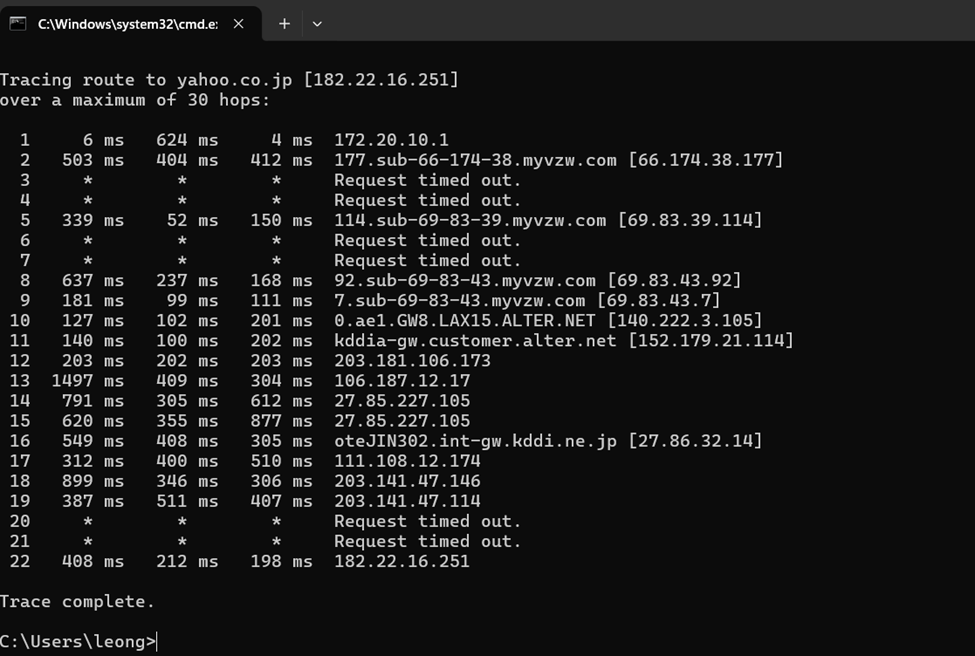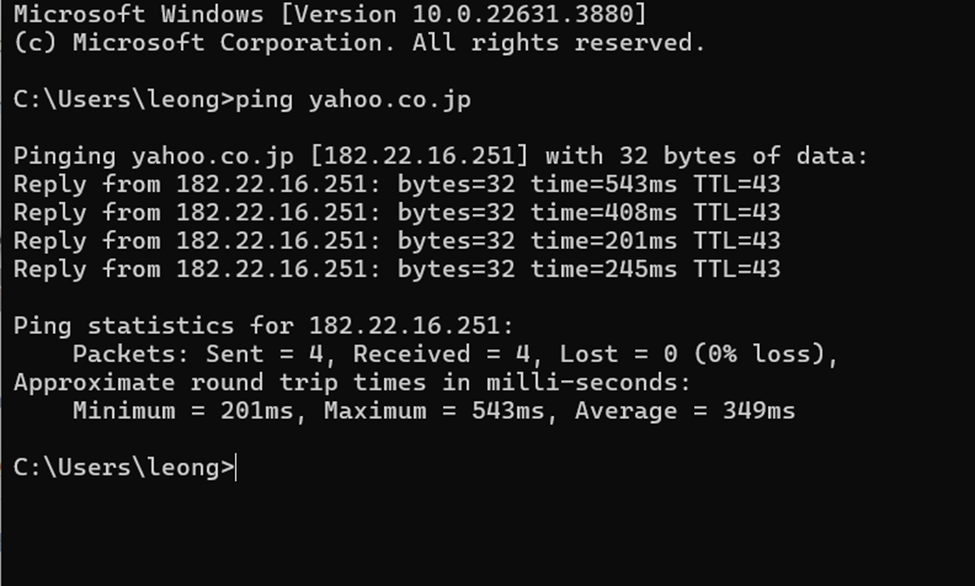When conducting network diagnostic tests using the ping and
traceroute commands, I observe how data packets travel through a network. It
demonstrated the complexities of network communication, especially in how data
reaches its destination across various geographical locations.
The ping command is a simple but effective tool used to test
the connectivity between my computer and a remote server. It works by sending
small packets of data to the target server and then measuring the time it takes
for the server to respond, known as the round-trip time (RTT) (Vahid &
Lysecky, 2019). In my tests, I pinged three websites: google.com, news.com.au,
and yahoo.co.jp. The results varied, with google.com having the shortest RTT,
while news.com.au and yahoo.co.jp had longer RTTs. This outcome is likely
because google.com servers are geographically closer to my location, which
reduces the travel time for the data packets.
In contrast, the traceroute command provided a more detailed
picture of how data packets navigate through the network. Traceroute tracks the
path that packets take from my computer to the target server, recording each
"hop" or network device that the packets pass through along the way
(Vahid & Lysecky, 2019). The paths to the three websites were different,
reflecting the unique routing policies and infrastructure of each network. For
example, the route to news.com.au involved more hops and longer delays at certain
points compared to google.com, which had a more direct and quicker path.
These differences highlight the relationship between
geographical location and RTT, as well as the impact of network infrastructure.
While it is generally true that RTT increases with the distance between the
source and the destination, other factors such as the efficiency of the network
and the number of hops also play a significant role. A more direct route with
fewer hops can result in a lower RTT, even if the geographical distance is
relatively long.
In addition to understanding how data travels across the
network, the ping and traceroute commands are also valuable tools for
troubleshooting internet connection problems. A failed ping request could
indicate that there is a problem with the server, such as it being down or
unreachable due to network issues. Alternatively, the server may be blocking
ICMP packets, which are used by the ping command, for security reasons (Vahid
& Lysecky, 2019). On the other hand, traceroute can help identify where along
the path the problem occurs. For instance, if the traceroute command times out
at a certain hop, it could suggest that the network device at that point is
experiencing issues or that it is configured not to respond to traceroute
requests.
References
Vahid, F., & Lysecky, S. (2019). Computing Technology
for All. Retrieved from
https://learn.zybooks.com/zybook/TEC101:_Fundamentals_of_Information_Technology_&_Literacy_(TED2432A)Links
to an external site.





No comments:
Post a Comment